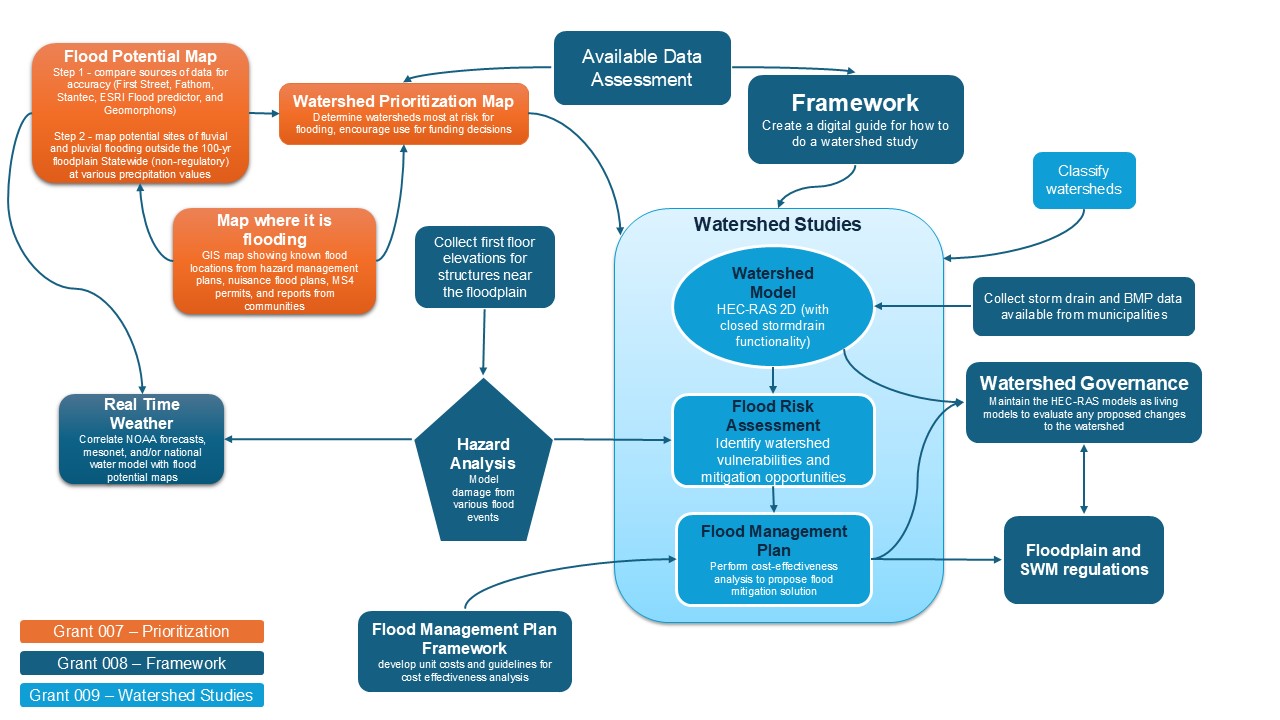
Connections to other MDE and State initiatives
Comprehensive Flood Management Grant Program (CFMGP): Maryland first performed watershed studies in the 1980s as part of the State's CFMGP initiative. This MDE Program provided grants to local jurisdictions for comprehensive flood management studies, plans, and mitigation projects. Although some flood management plans were developed, some of which are still in use, Maryland’s plan to develop flood mitigation plans in the 1980s was not fully implemented as originally envisioned.
Advancing Stormwater Resilience in Maryland (A-StoRM): In response to growing local concerns regarding precipitation-based flooding, Maryland’s General Assembly enrolled Chapter 641 of the 2021 Laws of Maryland (previously introduced as Senate Bill 227) that made addressing precipitation-based flooding a priority for MDE. This legislation became known as A-StoRM and required three things: MDE to report on the most recent precipitation data available, MDE to investigate flood events since 2000, and MDE to update Maryland’s stormwater quantity management standards for flood control. More information on MDE’s A-StoRM efforts can be found here: https://sb-227-maryland.hub.arcgis.com/. MDE has met or is in the process of meeting all three of these mandates, however, while developing strategies for meeting A-StoRM requirements, it became apparent that comprehensive watershed studies complimented MDE’s approach to meeting the A-StoRM requirements by providing a tool for applying appropriate stormwater quantity management in the watersheds most at risk for flooding.